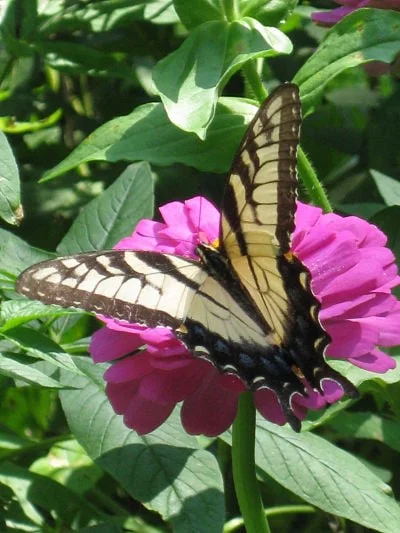Information at your fingertips
It's a thicket out there on the web. There are resources that really help -- but finding them is the trick. Bookmark these genuinely useful links that you'll use again and again. Suggest others and we'll add them.
Creating eco-friendly landscapes
What you do in your own backyard has implications for the wider ecosystem. Fertilizer and pesticide runoff from gardens and landscapes contributes to the deterioration of our waterways and invasive weeds crowd out desirable species. Gardeners can help by becoming aware of good planting practices and putting them to use. The Barnegat Bay Partnership with funding from the New Jersey Department of Environmental Protection has launched a website that offers helpful guidance on landscaping for a healthy environment.
Database of plants rated by deer resistance
The limiting factor for many New Jersey gardens is the ever-hungry deer. To be truly useful, a guide to planting in deer country has to take into account local preferences. This one, assembled by the Rutgers Cooperative Extension Service with contributions from landscape professionals and other horticultural specialists (including yours truly) rates a huge number of landscape species by how likely they are to be damaged or destroyed.
Landscape Plants Rated for Deer Resistance
Rutgers Cooperative Extension Service
If you want unbiased, research-based advice on your garden or any aspect of home landscapes, you can't do better than to seek out the free information available at your county extension office. Many are also staffed by extension-trained Master Gardeners and some have free help hotlines.
Consumer guide to mail order catalogs
Garden Watchdog is a website that functions as a kind of Consumer Reports for buyers of mail order plants and garden supplies. It offers a free, searchable directory of 7,850 garden catalogs, helping you locate exactly what you want. You also can look up a company before you send it your money to see how previous customers have fared.
Hardiness zone maps
Gardeners know that climate is changing. We see it in the earlier bloom of lilacs (a climate marker species), the appearance of new weeds and the ability to grow plants that previously would perish in our winters. Plant hardiness zone shifts document the warming trend. The USDA published its first new zone map in 20 years in 2012. The Arbor Day Foundation produced a new zone map in 2006, updated in 2015 -- and it's the easier one to use. Compare zones from 1990 and 2015; punch in your ZIP code and instantly find your zone.
Help me find....plants I crave
Here’s a handy search engine to help you locate that particular, much coveted cultivar of three favorite genuses -- roses, clematis and peonies. You can search with any one of a number of criteria: by name, alphabetical list, or class. An advanced search would expand search parameters to color, breeder, year bred, bloom cycle, bloom form, fragrance or zone. You can't ask for more from (and for) plant fanatics.




